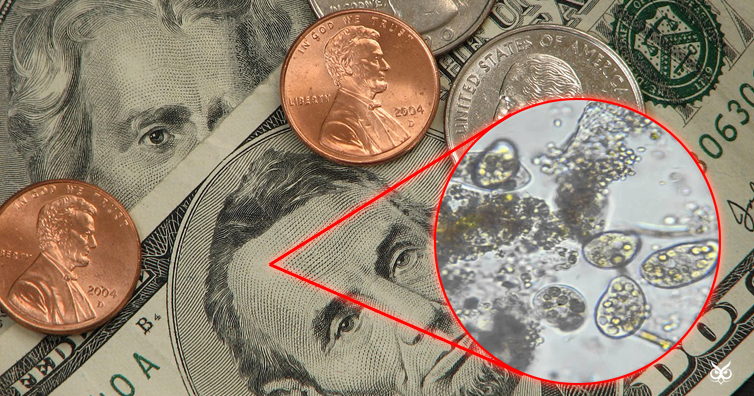We all wash our hands after going to the restroom (at least most of us do), but what about washing them after paying for food? Well, if you don’t, you may want to start, because the cash you carry in your wallet, is actually… filthy.
Paper money are filled with thousands of microbes from their everyday interaction with people’s fingers, vending machines, a waiter’s apron or just the dank area under your mattress:
In a study published on April 6, 2017 in the peer-reviewed scientific journal PLOS ONE, researchers swabbed $1 bills in NYC and found that money harbor thousands of species of microorganisms. Even though the majority of the bacteria were harmless, money were also full of bacteria that cause acne, vaginal bacteria, DNA from viruses and pets and microbes from mouths. But wait, there’s more. (the article continues after the ad)
In a study that evaluated the microbes found on circulating $10 dollar bills from several US cities, approximately 80 percent of them had traces of cocaine. Other research by NCBI found that both coins and bank notes contained pathogens like salmonella, staphylococcus aureus and Escherichia coli – pathogens that can lead to very serious illness.
Oh, and because we know you love useless information, here’s another one for you:
Because US currency are made of 75% cotton and 25% linen, they provide a soft environment for germs to land. Plastic polymer bills, such as those used in Canada and Australia, are way cleaner that American banknotes as it’s more difficult for microbes to settle on those surfaces.
Wash your hands!
If you like what you read, then you will definitely love this one: How Much Does It Cost To Print Money?
Photo: user1489788142 / Pixabay, footageisland / YouTube
Photoshop: I’m A Useless Info Junkie
Sources: Filthy lucre: A metagenomic pilot study of microbes found on circulating currency in New York City,| Paper money and coins as potential vectors of transmissible disease | Here’s How Dirty Your Money Really Is



